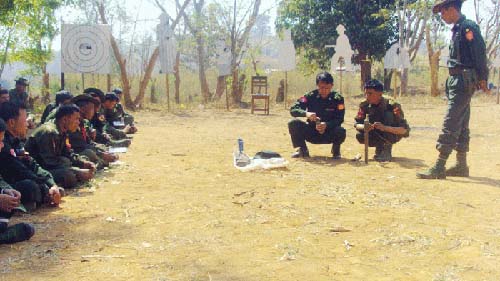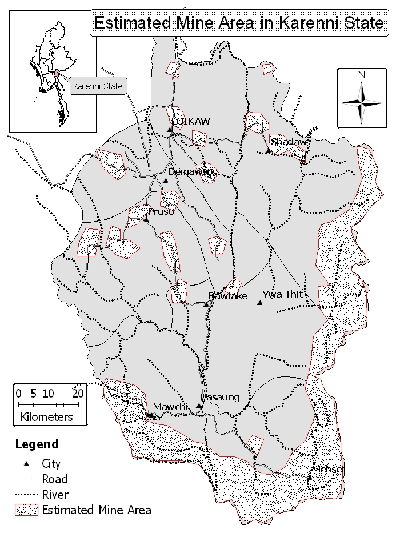One evening on a hill in Mawchi town, while some young people from the Baptist Church were busy cleaning up their church grounds and cutting the long grass, chatting and laughing together when they heard a loud explosion.

A local resident, Htoo Reh, who was an eyewiness, stated that after the explosion he found Soe Moe, a 26 year old male, had had his left foot blown off. Htoo Reh continued "we clean up the area around over church every Saturday before the Sabbath but none of us has ever been injured before."
On 3 March 2011, Brig-Gen Ko Ko Oo, commander of the Infantry Battalion No.134 of the Burmese army ordered all Burmese forces operating in Mawchi township, that is, troops at Tay Yu Taung, Tar Wati Thar, Kyaung Taung and Two Mile (No 2) camps and the Front line Battalion office, to place landmines to a radius of 30 yards around their base to guarantee its security.
Since the Battalion office is next to the church, its grounds fall within the 30 yard security radius and the accident on 24 March is a direct result of this security operation.
Htoo Reh said: " after Soe Moe trod on the landmine, we rushed to rescue him, but the soldiers shouted that there were many more mines in that area, so we were too afraid to go to his assistance."
He continued: “There is no reason to plant landmines inside the town. The Karenni soldiers have never come near the town centre and the locals' homes are much too close".
The victim was sent to the Mawchi public hospital on the day he was injured, but transferred the next day to the Pasaung hospital.
According to data collected by the Mine Risk Education (MRE) GROUP, which is based in Thai-Burma border, between 1978 and 2011, there have been 55 civilians from Karenni State and the Thai-Burma border injured in landmine accidents. Some were killed and others left with permanent handicaps.
Most of the landmines that are planted are R 14 landmines and the accidents mainly take place around Mawchi Township, in No.2 District of Karenni State. Landmines around the Tay Yu Taung Camp are also killing the villagers' livestock almost every day.
The Burmese army usually plants the landmines near their military camps, along the hydropower cable line and in the areas that are defined as black zones or free fire zones, where the IDPs are hiding and where the Karenni army is operating.
According to the Karenni Development and Research Group (KDRG), there are 18,000 landmines planted by Burmese military troops around the Lawpita Hydropower as well as 2000 landmines planted along the Thai-Burma border.
A Burmese soldier, who defected, told the Kantarawaddy Times that when the frontline outpost of Burmese troops change their base, they cannot identify the position of all the landmines, and even if they can identity them, the troops fail to de-activate all landmines. Many landmines have been planted without any indication of their location.
KDRG estimates that there are more than 100,000 landmines planted in Karenni State which is half of the population of Karenni State, that is one landmine for every two persons. Landmines are a major problem for civilians needing to move and work freely in order to survive.
The villagers from Mawchi mainly earn their living by cultivating, farming, and mining.
“We Mawchi residents don’t know what else we can do to work to survive while they plant landmines not only around the village but now right inside the village” said Htoo Reh hopelessly.



